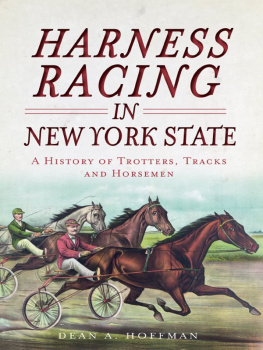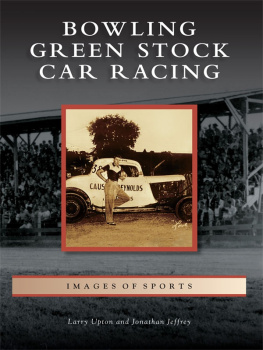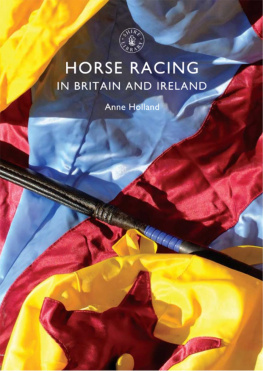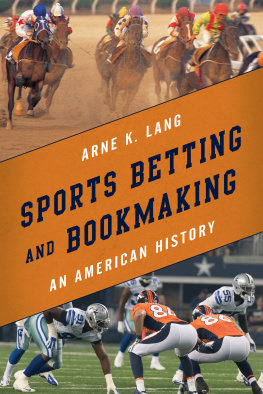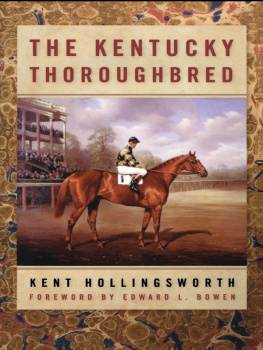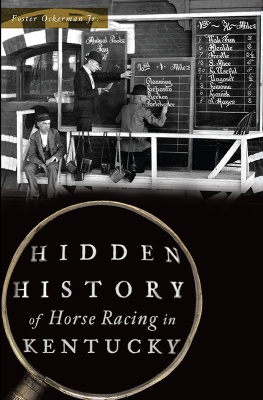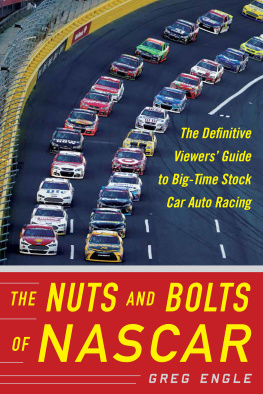
Published by The History Press
Charleston, SC 29403
www.historypress.net
Copyright 2012 by Dean Hoffman
All rights reserved
Cover image courtesy of the Library of Congress.
All images courtesy of the U.S. Trotting Association unless otherwise noted.
First published 2012
e-book edition 2012
ISBN 978.1.61423.629.0
print ISBN 978.1.60949.604.3
Library of Congress CIP data applied for.
Notice: The information in this book is true and complete to the best of our knowledge. It is offered without guarantee on the part of the author or The History Press. The author and The History Press disclaim all liability in connection with the use of this book.
All rights reserved. No part of this book may be reproduced or transmitted in any form whatsoever without prior written permission from the publisher except in the case of brief quotations embodied in critical articles and reviews.
Contents
Preface
George Morton Levy was on top of the worldthe harness racing world, that is. Thats how he must have felt as he watched the festivities and fireworks after the first Roosevelt International Trot on August 1, 1959. He could look around his dream track, built just two years earlier, and see it packed to the rafters with 48,619 racing fans. He knew that the press box was overflowing with print and broadcast media from the Big Apple and across the Atlantic. He knew that dignitaries and political leaders were in attendance.
Levy stood with a smile and accepted congratulations from well-wishers. Many had never seen a show quite like the Roosevelt International. This is the greatest thing ever to happen to our sport, said Joe Neville, founder and impresario of the famed Little Brown Jug race for pacers.
Levy couldnt help but reflect on the opening of Roosevelt Raceway in 1940, when he and other investors brought night parimutuel racing to metropolitan New Yorkand lost their shirt financially. Rains delayed the 1940 opening, but the rains were a blessing because Roosevelt Raceway didnt have enough horses to put on racing. The second season at Roosevelt was better but still not profitable. And then came World War II. Racing went under a rock during the war.
Yes, George Morton Levy could look back on that night in 1959 and see how his dream had come true. Others could look back on the sport of harness racing, which had its deepest roots and greatest progenitors in the Empire State, and see how far it had come in a century. From the days of the great stallion Hambletonian, the star trotter Dexter and the first Hambletonian at Syracuse, harness racing had come a long way in the Empire State.
What Levy and the others couldnt see that night in 1959, of course, is that Roosevelt and other New York tracks would enjoy little more than a decade of good times before new laws changed the business model for tracks. Harness racing in New York was still a viable business in the 1970s, but then it began to slip badly during the succeeding decades. Roosevelt Raceway closed in 1988, less than thirty years after that glorious night of the first International. No one could foresee that a tragedy of worldwide importance would play a role in the renaissance of New York racing, purse money would skyrocket and New York would once again become a harness racing mecca.
This book is the story of harness racing in New York, the state that can truly said to be the epicenter of the sport since the mid-1800s. Although harness racing in New York has experienced periods of both feast and famine, no other state has had a more significant impact on American harness racing.
A Messenger Shows the Way
By the rude bridge that arched the flood
Their flag to Aprils breeze unfurled
Here once the embattled farmers stood
And fired the shot heard round the world
Those were the words that the poet Henry Wadsworth Longfellow used to describe the opening act of the drama that led to the birth of the United States of America. The minutemen in Massachusetts sparked a rebellion that spread to the other British colonies in America, spurring a conflict that would last from 1775 until the improbable surrender of Cornwallis at Yorktown in 1783.
The colonists had brought a love of horse racing with them from England, but when the Revolutionary War broke out, it disrupted the importation of fine British bloodstock to the New World. When hostilities ceased, there was a rush to replenish the racing stock in the emerging American republic.
In 1788, the grey English Thoroughbred Messenger, age eight, arrived by ship in Philadelphia. After a long ocean voyage in cramped quarters, most horsesand peoplewere weary when it finally came time to put ashore. Not Messenger. According to legend, he charged down the gangplank so rambunctiously that it took two men to keep him under control. He stepped onto the soil of America with all the swashbuckling lan of a conquering hero. And that is exactly what Messenger ultimately became.
Messenger was just one of many English stallions that came to America. He was bred by the Earl of Grosvenor and foaled in 1780. Messenger was a son of Mambrino and believed to be the only foal of his dam. He was registered in volume 1 of the English Stud Book. In three seasons (178385) at the races, Messenger ran in fourteen races and won eight times. Nothing is known of him afterward until he arrived in America. Messenger did breeding duty in Pennsylvania and New Jersey before being relocated in 1794 to New York at the farm of Philip Platt near Jamaica on Long Island. The nomadic stallion returned to New Jersey and Pennsylvania briefly but spent most of his remaining career in New York.
The history of American harness racing is deeply rooted in New York. Due to the immeasurable contributions of horses from New York, specifically Messenger and his great-grandson, Hambletonian, the breed that started in the Empire State would ultimately spread across the continent and the world. In the sport of horse racing in post-Revolution America, Messengers offspring proved to be extremely successful. There were few registered Thoroughbred mares in America, so Messenger was bred to any mare whose owner was able to afford his stud fee, which ultimately escalated to a high of forty dollars.
One of Messengers daughters produced the unbeaten turf star American Eclipse, a foal of 1814 honored by the Thoroughbred industry two centuries later with the coveted Eclipse awards. Through Eclipse, the blood of Messenger shows up in countless Thoroughbred champions such as Man o War, Whirlaway, Seabiscuit, Gallant Fox and others.
Just how did Messenger thus establish a family that developed into trotters and pacers? The exact reasons cannot be fathomed. The evolution of the American trotter took place over many decades and many generations. Perhaps the greatest clue to his influence is that Messengers sire, Mambrino, was heralded in England as a great sire of coach horses, the steeds valued for pulling carriages and buggies on English roads. They covered the rural roads with a smooth gait that was their stock in trade.
As an individual, Messenger exhibited more brute strength than beauty when led out for inspection by visitors. He was certainly no childs horse, as his handlers had to be vigilant to avoid injury. The grey stallion was virile, fertile and able to settle many of the mares sent to him. One season he served 126 mares by natural cover. When ridden under saddle, Messenger seemed like a coiled spring. He was alert, full of energy and looking for action. He was never hitched to a buggy or cart but rather demonstrated a flashy trotting gait at times when ridden.
Next page
